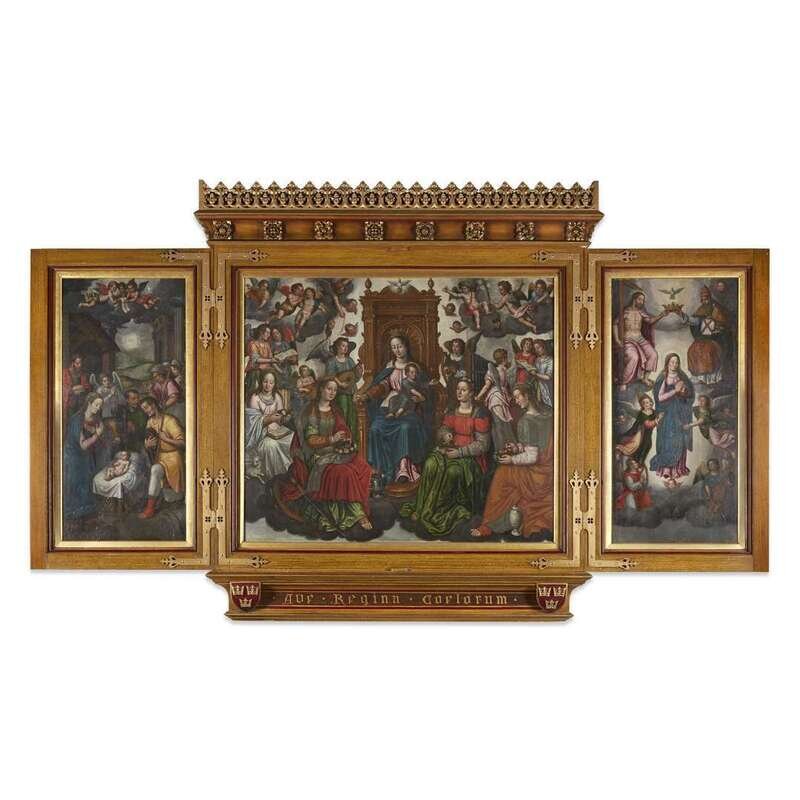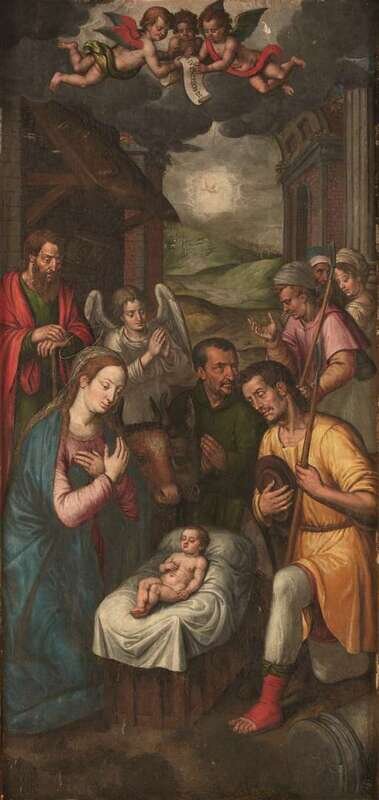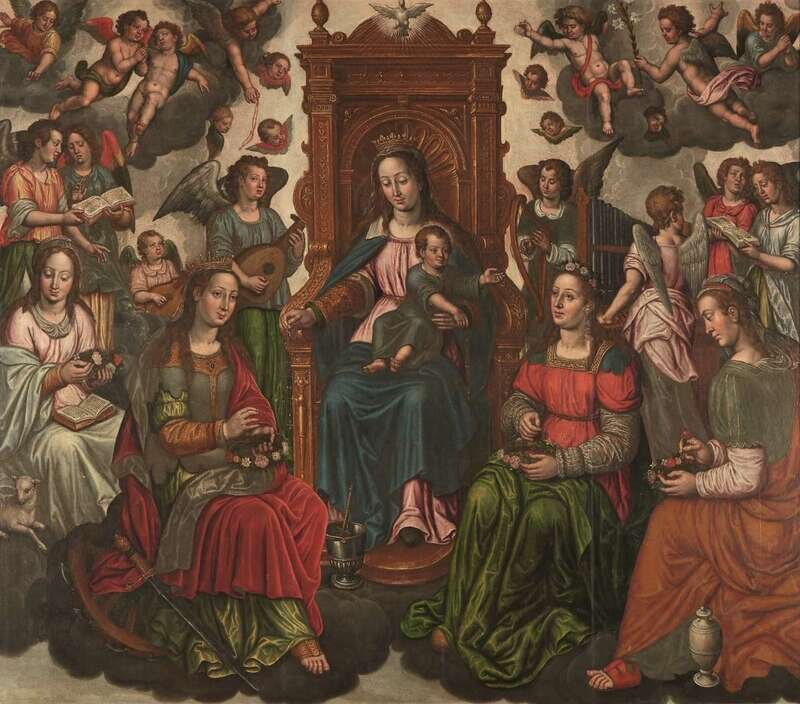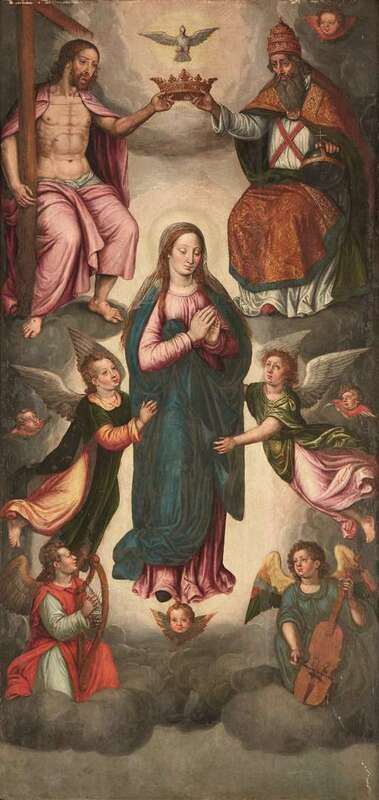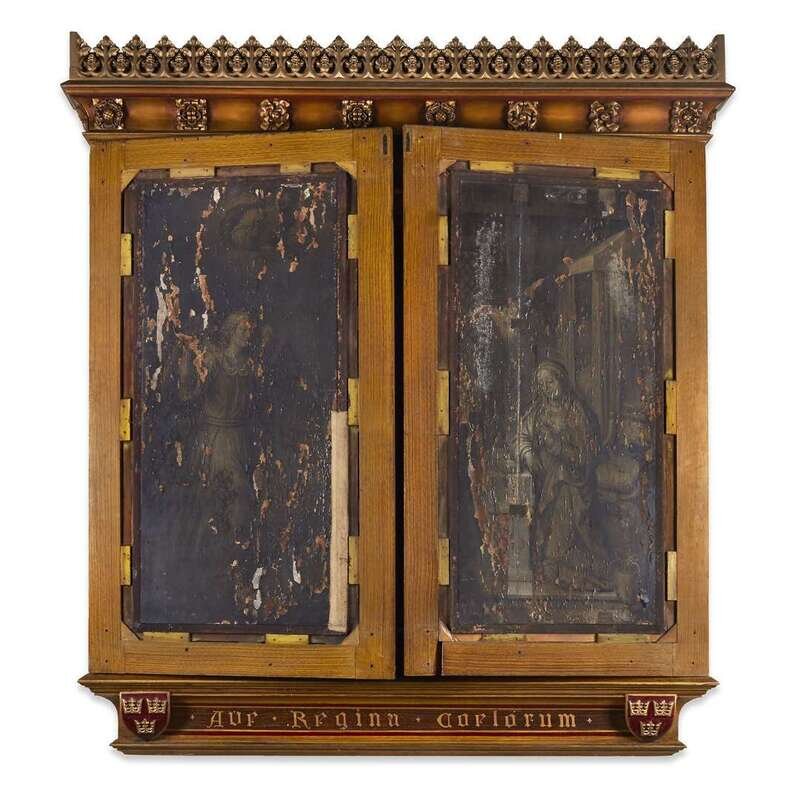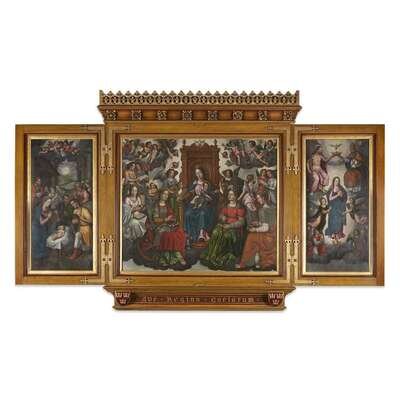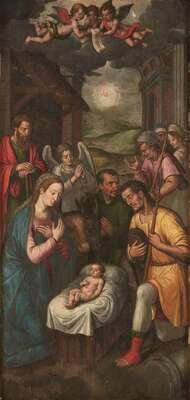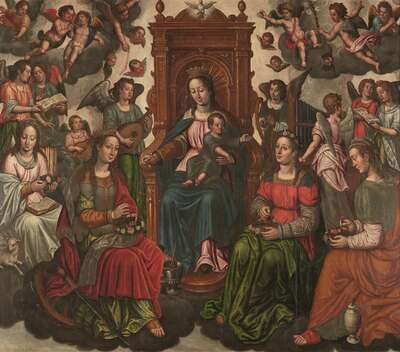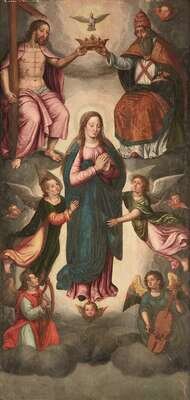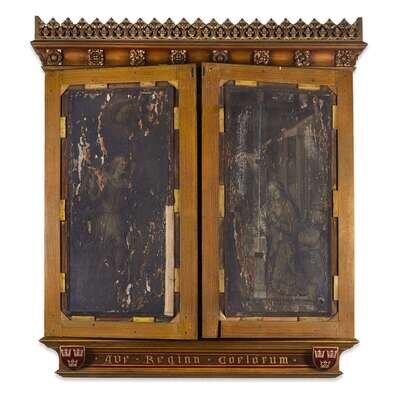Condition Report
Contact Information
Lot 4
CIRCLE OF JACOB DE BACKER (FLEMISH C.1540-BEFORE 1600) A TRIPTYCHCENTER: THE MADONNA AND CHILD ENTHRONED WITH SAINT CATHERINE, SAINT AGNES, SAINT CECILIA, MARY MAGDALENE AND ANGELS | THE LEFT WING: THE ADORATION OF THE SHEPHERDS | THE RIGHT WING: THE A...
Sale 5353 - European Art & Old Masters: 500 Years
Feb 27, 2019
7:00AM ET
Live / Philadelphia
Own a similar item?
Estimate
$20,000 -
30,000
Price Realized
$40,625
Sold prices are inclusive of Buyer’s Premium
Lot Description
CIRCLE OF JACOB DE BACKER (FLEMISH C.1540-BEFORE 1600) A TRIPTYCHCENTER: THE MADONNA AND CHILD ENTHRONED WITH SAINT CATHERINE, SAINT AGNES, SAINT CECILIA, MARY MAGDALENE AND ANGELS | THE LEFT WING: THE ADORATION OF THE SHEPHERDS | THE RIGHT WING: THE A...
